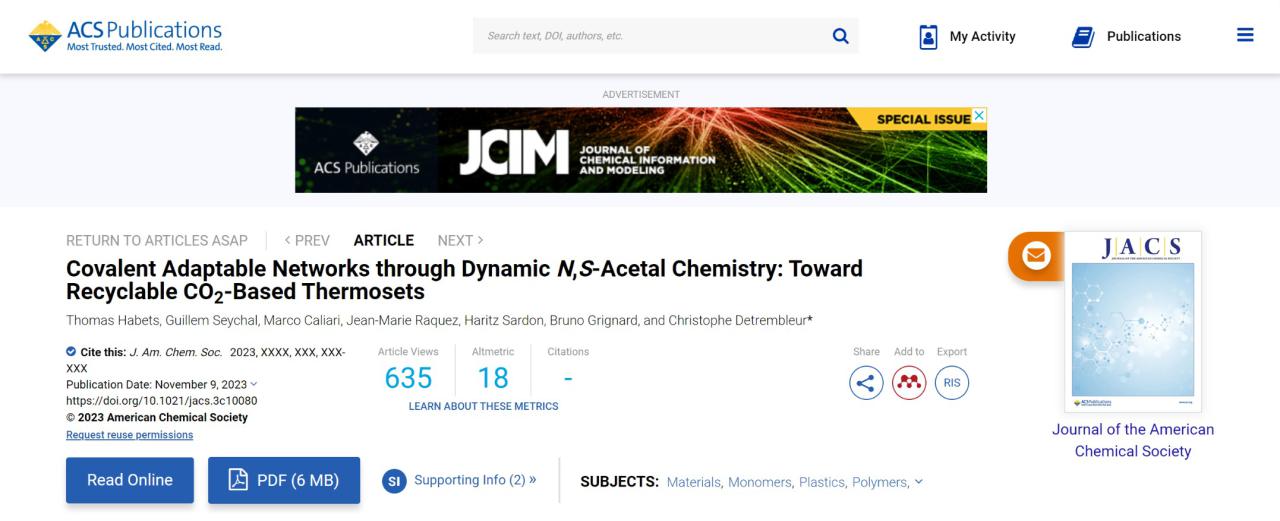According to reports, the University of Liège in Belgium
Liège chemists have developed a new polyurethane production technology that uses carbon dioxide to create a new, easily recyclable plastic that is produced using more sustainable materials and has similar properties to traditional petroleum-derived plastics.
The new technology is said to be emerging as a potential solution for developing sustainable plastics with a wide range of properties that can easily meet the needs of most of our everyday applications. The latest research results were recently published in the Journal of the American Chemical Society.

Commodity plastics have transformed global industry. Whether in construction, clothing, vehicles or food packaging, these plastics are everywhere in our daily lives. Furthermore, they are difficult to recycle. This has led not only to the depletion of the fossil resources used to make them, but also to their long-term accumulation in nature and the ocean.
Our society therefore has an urgent need to quickly design and manufacture “easily recyclable” plastics. It is against this background that researchers have developed a new technology for producing easily recyclable polyurethane plastics.
This approach is understood to be characterized by the use of carbon dioxide (CO2) – another source of pollution in our society – as raw material for the monomers required to produce these new products. The structure of the monomer can be easily modified, allowing the production of plastics with a variety of properties, from highly ductile elastomers such as silicones to more rigid materials such as polystyrene.
The researchers explain that the chemical structure of these plastics resembles a three-dimensional network rather than long linear chains. This structure is often similar to thermoset plastics that are difficult to recycle, making them more corrosion-resistant than plastics made from long molecular chains.
However, the polyurethanes created by the new research have new “dynamic” chemical bonds, meaning that although they have a thermoset structure, they can be reshaped through the exchange of chemical bonds under relatively mild reaction conditions.
The researchers say the biggest advantage of this new technology is its ability to change the performance envelope while providing multiple ways to recycle materials.
“These new plastics can be recycled in a number of ways, either by heating them to reshape them, by mixing different types of plastics to create hybrid materials with new properties, or by breaking them down into their constituent monomers, which is the elimination of dyes Ideal for additives or recycled composites,” they added.
Finally, focusing on the future industrialization of CO2 value-added, this study shows that CO2 can be directly utilized as a chemical resource.
“It is remarkable that our material has achieved similar properties to some traditional petroleum-derived plastics,” they said. “This new technology is emerging as a potential solution for developing sustainable plastics with a wide range of properties that can easily meet our large needs.” Requirements for most daily applications.

 微信扫一扫打赏
微信扫一扫打赏

